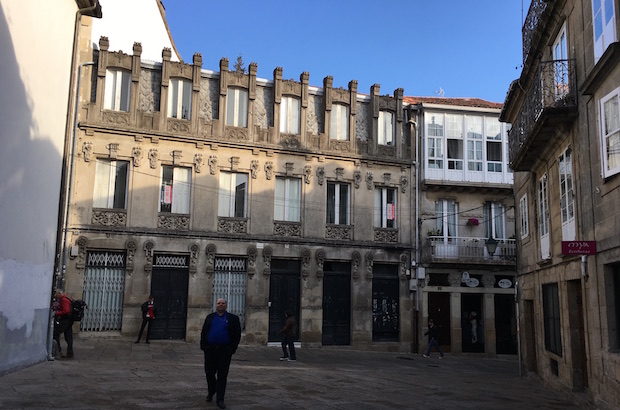
The legend is almost as old as the Church. Folks in Spain believe that the Apostle James visited Spain during his missionary travels spreading the Gospel. They also believe that after his martyrdom that his body was brought back to Spain and was buried in the vicinity of Santiago de Compostela, Galicia, in the northeast of Spain. Over the centuries, making a pilgrimage to a holy site became a form of penance. In the annals of the Spanish Inquisition, the pilgrimage to Santiago de Compostela was one of four approved for penance.
The number of pilgrims making the pilgrimage to Santiago de Compostela has fluctuated through the years, but it became a very popular pilgrimage during the closing twenty years of the 20th Century. There is no one pilgrimage route to Santiago de Compostela, however, there are a few main routes across northern Spain to the city. In the city, the pilgrimage finishes at the Cathedral of Santiago de Compostela, where it is said the body of St James is buried. Usually, there are two masses a day for the pilgrims of The Way and more on special occasions. The Cathedral boasts the largest incense censer or thurible in the world, el Botafumeiro. It is hung from the crossing and is swung to dispense immense clouds of incense.
The Spanish Reformed Episcopal Church, the Anglican Church in Spain, is an extra-provincial member of the Anglican Communion under the metropolitical authority of the Archbishop of Canterbury. The entire country makes up one diocese with 20 parishes. The Church traces its apostolic succession through the Church of Ireland. The Spanish church’s Book of Common Prayer is the first to incorporate the Anglican forms of worship with an indigenous prayer tradition, the Mozarabic Rite.
A large number of pilgrims on the Way of St James are Anglicans. However, when they complete the pilgrimage at the Cathedral, along with the other non-Roman Catholic pilgrims, they just become spectators. They aren’t allowed to participate in the Cathedral services or to receive communion. The Spanish Reformed Episcopal Church would like to change that. On 26 NOV 2016, members of the Church gathered in the Cathedral of the Redeemer in Madrid to dedicate it as a welcome center for pilgrims. On that occasion, the Rt Revd Carlos López-Lozano, the bishop of Spain, consecrated a tile with the modern scallop shell symbol of the Way of St James to be placed at the door of the Cathedral. The tile is recognized by pilgrims as a mark or sign of welcome.
We, the Spanish Episcopal Church, a proud member of the Anglican Communion, wish to be part of the radical hospitality which defines our faith. Pilgrimage and the Camino here in Spain are becoming increasingly important. Up until now there has not been an Anglican welcome center in Madrid for pilgrims. There is now: a place where pilgrims can be welcomed with a cup of coffee or tea or tapas and a blessing. . .
The Rt Revd Carlos López-Lozano
Bishop of Spain
Additionally, the Spanish Church is making plans to open an Anglican Center in the City of Santiago de Compostela. With fundraising assistance from Trinity Episcopal Church – Wall Street, they hope to raise $5 million. The purpose of the Center is for Anglican pilgrims to have the opportunity to finish their pilgrimage with a communion service in which everyone is welcome to receive communion. It is also hoped that the Center would also be able to offer up to 60 guest rooms and a café. The funds would be used to remodel an existing building in Santiago de Compostela and provide the seed money for an endowment to help with the expenses of operating the Center. There is currently no published timeline for this project.
Pilgrimage is at the very heart of our faith. In recent decades the Camino of St James in Spain has grown in popularity but until now, the Anglican Church has not been able to welcome its pilgrims. In the Bible we often see Jesus walking with fellow pilgrims and so the prospect of building a center where pilgrims can be given hospitality is a positive step forward for the church. The Anglican Center in Santiago will bring people together, welcoming all for a common good. I offer my congratulations and thanks to the church for this, a global interfaith religious centre, part of the Anglican Communion in Spain.
The Most Revd Justin Welby
Archbishop of Canterbury
The main photo is of one of the possible locations for the Anglican Center in Santiago de Compostela. The information for this story was gathered from the Anglican Communion News Service and the Anglican Journal, as well as various articles in Wikipedia.

